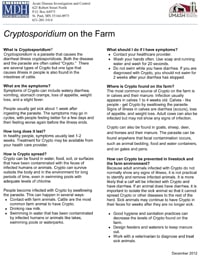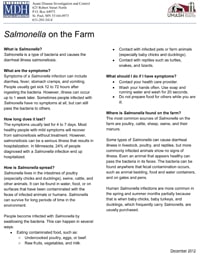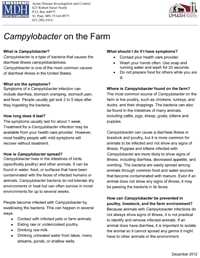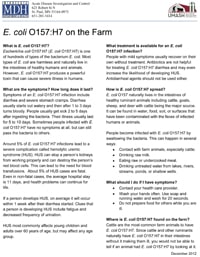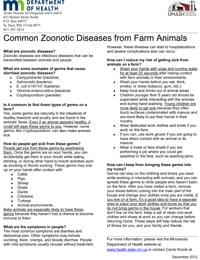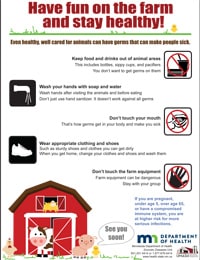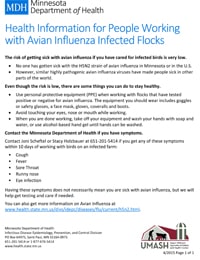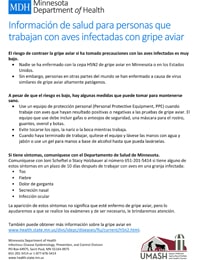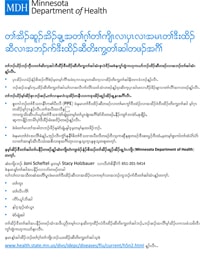FEBRUARY 2021 The concept of sharing for most of us probably goes back to childhood. Whether we learned to share with a sibling, a friend, or in school,
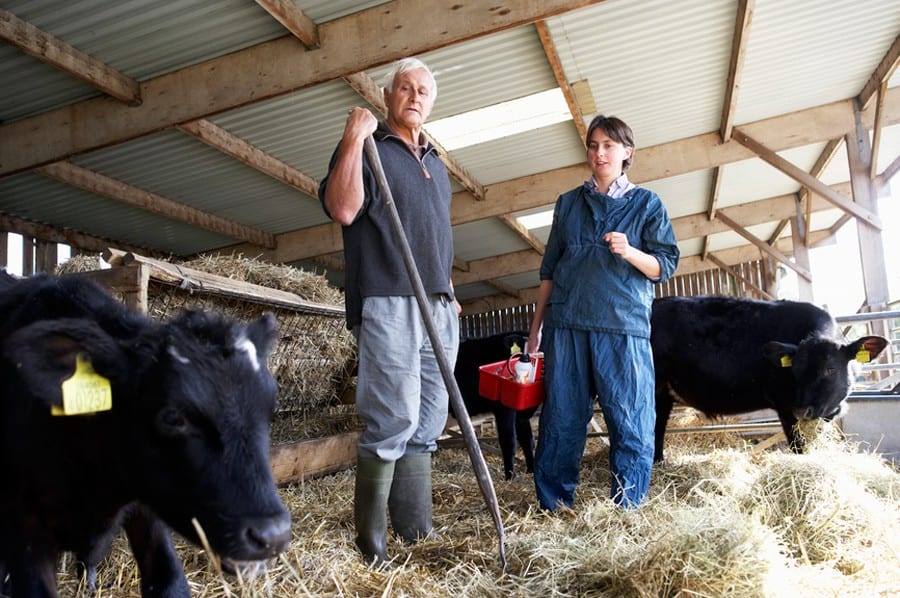
Project Description
Dates: 2012 – current
Diseases shared by humans and animals are more likely to affect agricultural workers and their families than other Minnesotans. These types of diseases are called zoonoses and some examples are E. coli O157:H7, Salmonella, and Cryptosporidium. Currently, information is lacking on exactly how frequent these infections are among agricultural workers, what the specific risk factors are for becoming ill from a zoonoses, and what preventive measures may be most effective.
The primary role of the Minnesota Department of Health (MDH) in the Upper Midwest Agricultural Safety and Health Center is to use the work MDH is already doing to keep track of infectious diseases in Minnesota to better describe the frequency of zoonoses in agricultural workers, their families, and others exposed to agricultural settings in Minnesota. The long term objective of the MDH project is to reduce the frequency of zoonoses among agricultural workers, their families, and others exposed to animal agriculture settings.
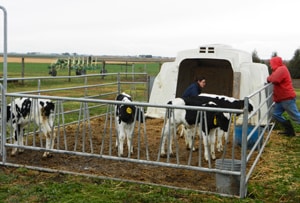
Our project aims to work on the following things:
- Identify the most important zoonotic diseases found in agricultural populations in Minnesota;
- Starting in 2012, determine how frequently agricultural workers are getting sick with these diseases every year;
- Study any new diseases that may be related to agriculture settings;
- Find out what specific risk factors are leading to agricultural workers and their families becoming sick; and
- Develop and put in place programs to prevent workers, their families, and visitors from becoming sick with zoonotic diseases.
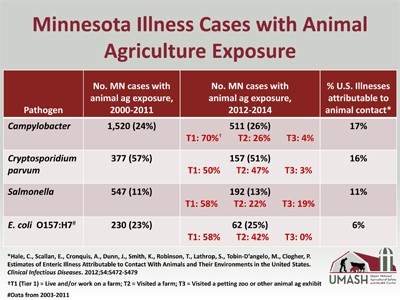 Agriculture is a large part of Minnesota’s economy, supporting more than 340,000 people through food animal production and processing support services. Zoonotic diseases (diseases that can be passed between animals and people) are a risk to agricultural workers, their families, and others exposed to food animals. However, little information is available describing specific risk factors on the farm for developing a zoonotic disease and how frequently agricultural workers and their families get sick from food animals. The UMASH project at the Minnesota Department of Health (MDH) focuses on describing the size of this problem in agricultural populations, which can be used to develop more effective prevention measures to minimize the occurrence of zoonotic diseases.
Agriculture is a large part of Minnesota’s economy, supporting more than 340,000 people through food animal production and processing support services. Zoonotic diseases (diseases that can be passed between animals and people) are a risk to agricultural workers, their families, and others exposed to food animals. However, little information is available describing specific risk factors on the farm for developing a zoonotic disease and how frequently agricultural workers and their families get sick from food animals. The UMASH project at the Minnesota Department of Health (MDH) focuses on describing the size of this problem in agricultural populations, which can be used to develop more effective prevention measures to minimize the occurrence of zoonotic diseases.
Diarrheal illnesses such as Cryptosporidium, E. coli O157:H7, Campylobacter, Salmonella are reportable to MDH, and all ill people are interviewed with a routine questionnaire that includes questions about agricultural exposures (living, working, or visiting a farm, petting zoo, fair, or other venue with animals). Since January 2012, patients with agricultural exposure have been re-interviewed with a more detailed questionnaire about the types of activities they were doing with the animals. Based on these interviews, 51% of patients with a Cryptosporidium parvum infection, 25% of patients with an E. coli O157:H7 infection, 26% of patients with a Campylobacter infection, and 13% of patients with a Salmonella infection had a food animal exposure in the week before their illness. For all but Salmonella, the percentages of ill people with food animal contact are much higher than previously reported estimates; (Cryptosporidium 16%, E. coli O157:H7 6%, Campylobacter 17%, and Salmonella 11%). MDH offers educational materials to these patients, and 57% of them were interested in receiving the materials.
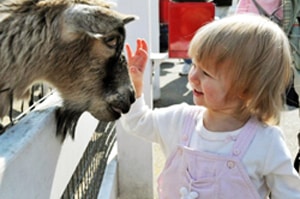 In addition to collecting data on recent zoonotic infections, MDH has offered four, free full-day workshops to people associated with county fairs and two free evening workshops to people with agritourism operations (apple orchards, pumpkin patches, corn mazes, etc.) on how to have safe human-animal interactions. These workshops have been well-attended and well-received, and we plan on continuing them on a yearly basis.
In addition to collecting data on recent zoonotic infections, MDH has offered four, free full-day workshops to people associated with county fairs and two free evening workshops to people with agritourism operations (apple orchards, pumpkin patches, corn mazes, etc.) on how to have safe human-animal interactions. These workshops have been well-attended and well-received, and we plan on continuing them on a yearly basis.
This past summer we had two outbreaks of E. coli O157 associated with different county fairs. MDH has been working closely with the fair board presidents and will be providing onsite consultations for the fairs to discuss measures that can be implemented for next fair season in order to prevent future outbreaks from happening.
LINKS:
- UMASH Agritourism Information and Resources
- UMASH Pilot Project to Develop Healthy Fair and Petting Zoo Workshops in Minnesota
- UMASH Resource Database
Project Resources
Project News
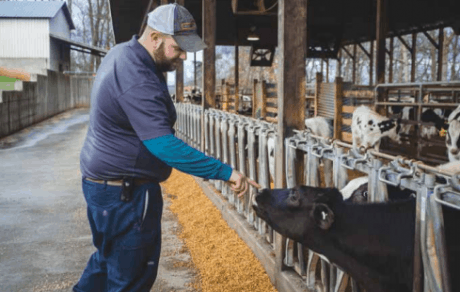
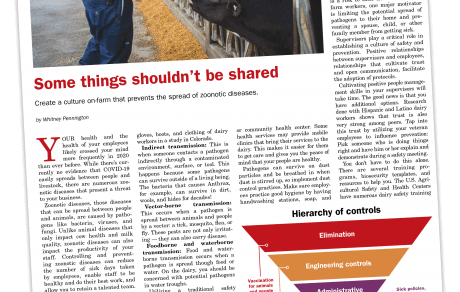
SPOTLIGHT: Some Things Shouldn’t be Shared

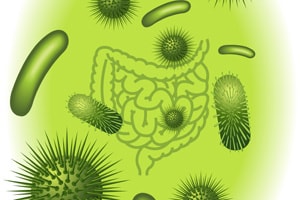
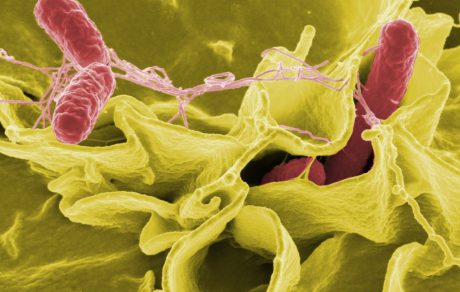
SPOTLIGHT: Living, working on farms increases risk of gastrointestinal illness
MARCH 2020 New study reveals greater levels of infection in people working with livestock Minnesotans who live or work on a farm with livestock and poultry
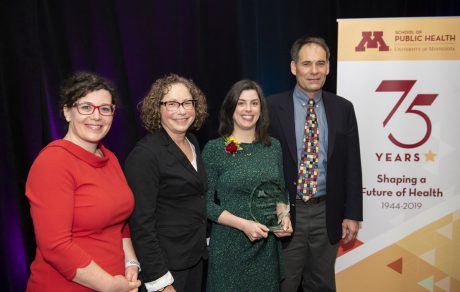
Carrie Klumb Receives 2019 SPH Emerging Leader Award
Carrie Klumb, from the Minnesota Department of Health was recently recognized by the School of Public Health and received the 2019 Emerging Leader
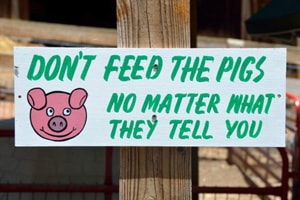
Zoonotic Diseases: Gotta Catch ‘Em All!
The Minnesota FFA convention was held April 28 - 30, 2019 on the University of Minnesota campus. This April event brings over 4000 students and a sea
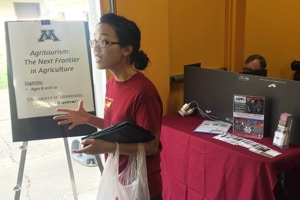
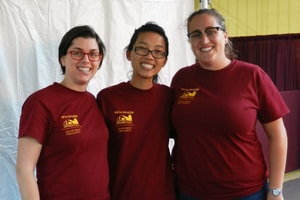
UMASH at the Great Minnesota Get Together
UMASH was one of many studies in the University of Minnesota’s Driven to Discover Research Building activities during the 12 days of the 2016 Minnesota


UMASH at the 2016 Council of State and Territorial Epidemiologists (CSTE) Conference
UMASH and Minnesota Department of Health (MDH) researcher, Carrie Klumb, presented Zoonotic Disease Surveillance Among Agricultural Workers and Their Families,
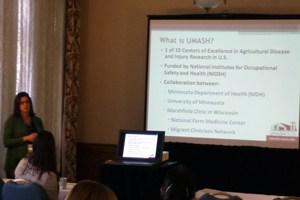
UMASH at 7th International SHARP Symposium
UMASH staff presenting in Saskatoon, SK, Canada, October 19-22, at the 7th International Symposium: Safety & Health in Agricultural & Rural Populations:

Carrie Klumb, MPH Presents Environmental Health Seminar
Carrie Klumb, MPH, Senior Epidemiologist at the Minnesota Department of Health presented a seminar “A One Health Approach to Healthy Fairs”
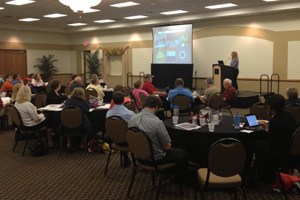
Healthy Fairs Workshops presented by the Minnesota Department of Health and the Minnesota Board of Animal Health
The Minnesota Department of Health and the Minnesota Board of Animal Health recently hosted Healthy Fairs Workshops aimed at those putting on county fairs.
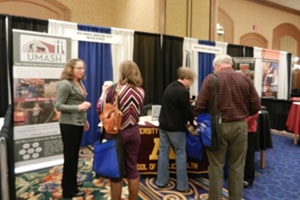
UMASH Presence at the Minnesota Veterinary Medicine Association (MVMA) Annual Convention
UMASH was well represented at the MVMA Convention February 7-9, 2013 in downtown Minneapolis with faculty and staff from the Surveillance for Zoonotic






